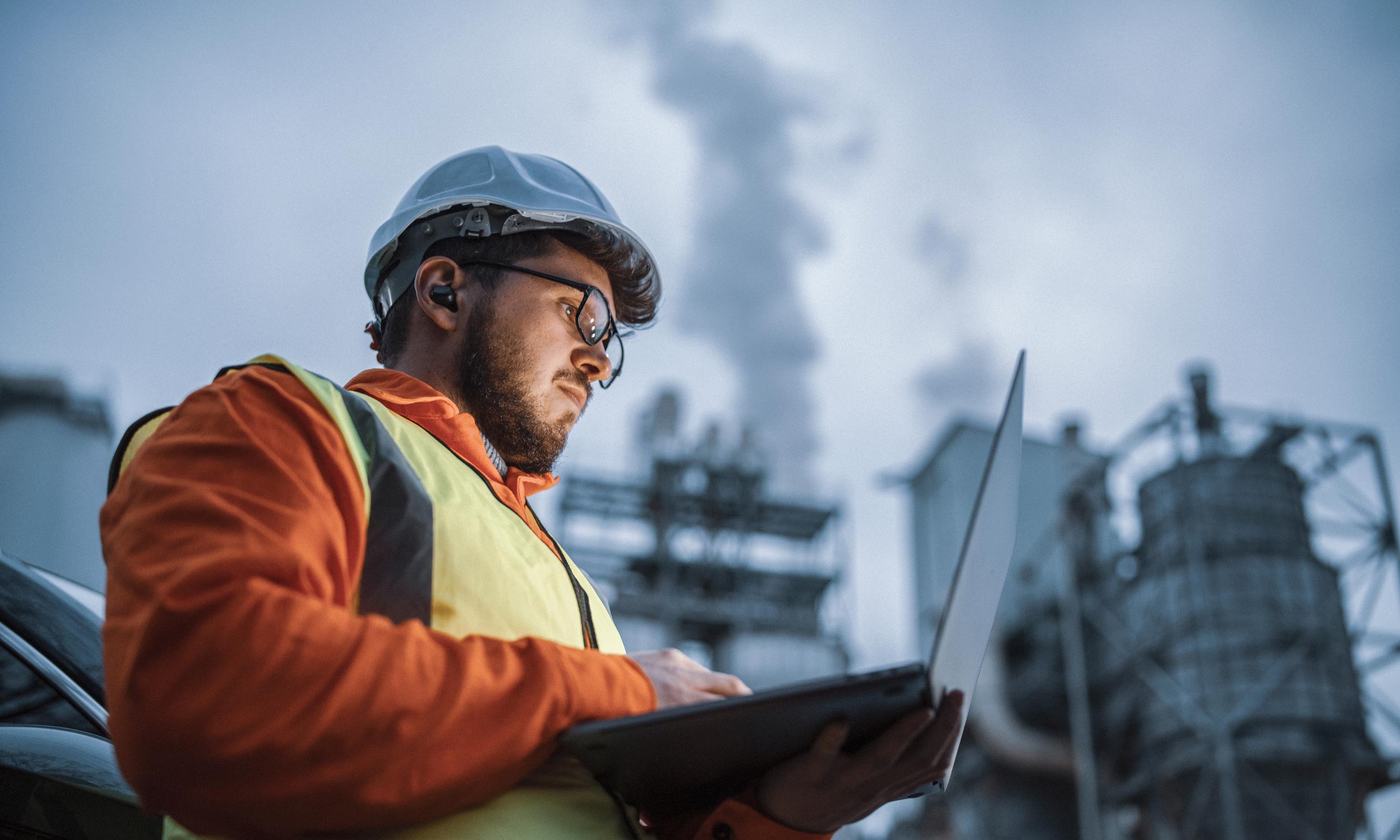Pollution liability: A risk for today, not just the future
Climate ChangeArticleMay 21, 2025
Climate change and an evolving regulatory and legal landscape are driving increased environmental liability, prompting a growing number of businesses to reassess environmental risks and address gaps in protection, according to Clive Walker, Global Head of Environmental Impairment Liability, UK and International, Zurich Commercial Insurance.
Environmental risks dominate the biggest risks of concern for the long term, according to the World Economic Forum’s Global Risks Report 2025, produced in collaboration with Zurich Insurance Group. The four top long-term risks were all environmental: Extreme weather was ranked top, followed by biodiversity loss, critical change to earth’s systems and natural resources shortages. Pollution, the common thread that runs through these environmental risks, was placed tenth in the ten-year ranking, rising to sixth when looking at a two-year horizon.
Organizations that fail to prevent harmful pollution events – including those caused by hard-to-predict events like floods and fires – increasingly face expensive litigation, regulatory fines, and the rising costs of cleanup and remediation. Despite the consequences, many organizations continue to underestimate the risks of pollution and are all too often under-prepared and insufficiently protected.
Growing liability
Corporates are under increasing scrutiny when it comes to pollution. Public awareness of environmental issues is increasing, and investors and other stakeholders are placing greater emphasis on environmental, social, and governance (ESG) criteria. In tandem, organizations must comply with stricter environmental laws, environmental risk disclosure requirements and liability provisions (accounting standards), while non-compliance is increasingly likely to result in costly enforcement action, legal action and reputational damage.
Recent years have seen a notable trend for non-government organizations (NGOs) – such as environmental and community groups – bringing legal action, including class action litigation and driving legal change through this action. Many jurisdictions now allow NGOs to bring class action claims on behalf of affected communities and ecosystems, while advancements in technology and science are making it easier to detect and quantify pollution and environmental damage.
Precedent-setting and successful class action lawsuits are also encouraging litigation. “Forever chemicals” (such as PFAS) are a case in point. Growing awareness, testing, and regulatory changes are contributing to a surge in PFAS litigation, with settlements in the US reaching $18bn in 2024, and on a path to eventually exceed $100bn, depending on how certain trends evolve, according to Verisk. In the UK, a landmark toxic waste case against Corby Borough Council in 2009, which inspired the recent Netflix TV series Toxic Town, established for the first time a link between atmospheric toxic waste and birth defects.
Extreme events
The increasing frequency and severity of extreme weather events is another notable driver of increasing pollution liability. Extreme weather events were perceived as the second biggest risk for the immediate and near term, according to the WEF survey. Storms and floods can cause spills and releases of hazardous materials and chemicals into the environment, while man-made wildfires have triggered liability for damage to the environment and biodiversity.
In recent years, hurricanes and floods in the US have resulted in the release of toxic chemicals from industrial sites and refineries, as well as the overflow of wastewater treatment plants and chemical spills from storage tanks. Last year, Hurricane Milton reportedly caused at least 70 million gallons of pollution to enter waterways in the US state of Florida, with 271 reported pollution incidents, according to analysis from the Environment Florida Research & Policy Center.
Fires, both natural and man-made, are another potential cause of pollution. Contaminated water and fire suppressants from firefighting can find their way into soils, rivers and waterways. As an example, firewater runoff from a fire at Luton Airport carpark in 2023 (which contained fuel and toxic heavy metals from electric vehicles) contaminated a local drinking water aquifer, resulting in a costly clean-up and remediation order. Contamination and clean-up costs related to the use of firefighting foams containing PFAS are also a growing source of litigation in the US, UK and Europe.
Risk management actions
Pollution liability is not just an issue for businesses managing hazardous materials. Companies large and small, across all sectors, are vulnerable to financial and reputational damage from pollution incidents. Even well protected companies are at risk from unexpected pollution events, such as floods and fires.
To address this risk, as a first step, companies and risk managers should undertake a detailed assessment of their environmental risks, identifying any gaps in loss prevention and protection. In this regard, specialist environmental liability insurers, third-party experts, and consultants can offer valuable support and advice to help organizations understand environmental risks and their potential impact. For example, Zurich Resilience Solutions risk engineering teams are working with businesses to carry out surveys and risk assessments as they look to better understand their environmental and climate-related risks.
The best way to reduce environmental liability risk is through good governance and oversight. It is essential for businesses to proactively manage their environmental risks and ensure compliance with relevant laws and standards to mitigate potential liabilities. Robust response plans are another cornerstone of an effective environmental risk management strategy: A proper, well-rehearsed response and crisis management plan can significantly reduce the cost and reputational impact of a pollution event. Environmental regulators look favourably on the ability of a polluting company to take quick control of an environmental incident themselves to mitigate potential environmental impacts. Demonstrating this proactive approach and presenting a comprehensive remediation plan with the help of expert environmental professionals such as spill responders, consultants, loss adjustors, lawyers and of course claims handlers, will reduce liability and reputational damage and could help avoid potential enforcement action.
Technology also plays an important role in helping to prevent future pollution, clean up environmental damage and aid compliance. Data analytics and AI, for example, can help predict pollution events and identify potential risks, while innovations such as real-time monitoring and detection, and remote and smart sensing technologies can help speed up response. And should the worst happen, advancements in areas like bioremediation, phytoremediation and water treatment technologies allow for more effective, efficient and greener clean up and remediation, reducing or eliminating the need for waste disposal.
Plugging protection gaps
Insurance is another crucial tool to protect an organization from growing environmental liability, especially from hard-to-predict risks such as floods or fires. Working with a specialist environmental liability insurer brings a fresh perspective, helping to identify new or evolving environmental risks and develop the right mitigation and risk transfer strategy to address them.
With the increased focus on corporate responsibility, many large companies now carry out environmental impact assessments and identify gaps in their insurance protection. As a result, more and more companies see the value in Environmental Impairment Liability (EIL), which provides affirmative coverage for a wide range of pollution events not covered under traditional products, including gradual pollution, clean-up costs, third party bodily injury and property damage and biodiversity damage.
Unlike traditional property and liability covers, EIL provides comprehensive cover for unexpected pollution incidents, such as those caused by extreme weather or fires. Issues such as PFAS show that the environmental regulation and enforcement landscape can evolve quickly and unexpectedly, leaving companies with unforeseen liabilities. EIL is designed to respond to these changes in law during the policy period, which can extend over multi-year periods. It can also be used as a tool to transfer balance sheet liability provisions for legacy pollution e.g. in the context of M&A transactions, as well as providing pollution coverage solutions for construction and development projects, particularly on brownfield assets.
In addition to providing insurance cover, insurers can support businesses respond to environmental emergencies through systems such as Zurich Environmental Emergency Response (ZEER). With a service like this insurers can provide the companies with the help they need for example in case of a spill, helping to coordinate cleanup, investigation and regulatory reporting – reducing cost and mitigating potential liability.
Urgent action required
Environmental liability risks are growing as the effects of pollution become more apparent. However, as demonstrated by the WEF report findings, they are often underestimated and viewed as a future issue. As the examples show, pollution is very much an issue for today, not just in 10 years from now, and the need for businesses to implement solutions is urgent.
Originally published in Commercial Risk on May 21, 2025.



